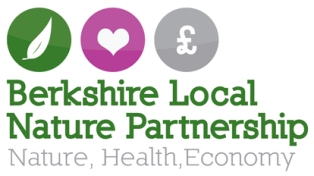The report 'Making Space for Nature' tells us that we need to chance our current approach to nature conservation, from simply trying to protect what we have to a large scale approach which re-establishes habitat networks and the services they provide us. Habitat networks are an effective method of conserving nature in landscapes that have been fragmented by human actions; they ensure that core sites for wildlife are connected, and that gene flow between populations is maintained.
In order to take this approach in Berkshire, and work towards joining-up our habitats across the landscape, it is important to have a good understanding of the current functional connectivity of our main habitat types.
Berkshire's Biodiversity Action Plan Partnership identified Biodiversity Opportunity Areas as the first step in improving habitat connectivity in the county. Areas were identified based on existing concentrations of habitat and important areas for rare species, as well as considering land with the potential for habitat restoration and other factors (such as geology, topography and hydrology).
Mapping Habitat Connectivity in Berkshire
We undertook a project to look at current functional habitat connectivity in the county. This project collaborated with the University of Reading and the Berkshire, Buckinghamshire and Oxfordshire Wildlife Trust.
Aims of this project
The project aims to improve our understanding of habitat connectivity in Berkshire in order to help to identify where habitat restoration may be best situated to provide the biggest gains for biodiversity, and to identify a way to track changes in habitat connectivity in the county over time.
Project Outputs
The project outputs include 4 maps, showing current habitat networks (functionally connected habitats) for each of the four broad habitat types within the county; woodland, grassland, heathland and wetland, based on a least cost model.
It is also possible to re-run the model, asking specific questions that may occur at a local level. For example, experts in specific species may wish to investigate how connected the landscape is for that particular species or someone writing a land management plan may wish to look at which habitats it would be best to (re)create to improve connectivity in the area. For further information about the project outputs, or to re-run the models with different parameters, please contact the LNP.

Picture 1. Example of grassland connectivity near Reading
Summary of Method
Stage 1: Creating a Land Use Map for Berkshire
We obtained land use maps from the Thames Valley Environmental Records Centre (TVERC). Ordinance Survey VectorMap District data was combined with this data set in order to map roads and buildings. The result is a map layer with 100% coverage of Berkshire, showing land use.
A fee may apply for the provision of this data.
Stage 2: Assigning Costs
The model that we decided to use requires estimates to be made regarding how well species typical of one habitat type can move through other land use types. For example, how well a typical woodland species could travel through grassland, roads, built areas, wetland etc.
There was a national project led by Roger Catchpole, Natural England looking at national habitat networks. As part of this project work was done to collate information about habitat permeability for generic woodland, heathland, grassland and wetland (fen, mire, bog) species. This project produced the relative costs for each generic species to travel through each land use type. For example, a typical woodland species may be able to travel 3km through broadleaved and mixed woodland, but only 10m across a motorway, or 300m across grassland habitats.
We used these 'costs', adapted slightly to account for local variation.
Stage 3: Running the model
We used the cost-distance tool in ArcMap to produce the final maps. The model looks at each location (grid square), and calculates the least cost option for retuning to optimal habitat from that square in Berkshire. Essentially this highlights which bits of habitat in Berkshire are functionally connected for typical species of each of the four broad habitat types (woodland, grassland, heathland and wetland).
Further Information
Full details of the method and associated limitations can be obtained by contacting the Berkshire LNP.
More information can also be obtained from:
Catchpole, R. (2007) England Habitat Network Briefing Note, Natural England
Catchpole, R.D.J. 2006. Planning for Biodiversity – opportunity mapping and habitat networks in practice: a technical guide. English Nature Research Reports, No 687
The Trent Valley Biodiversity Opportunity Mapping Project by Nottingham Biodiversity Action Group


